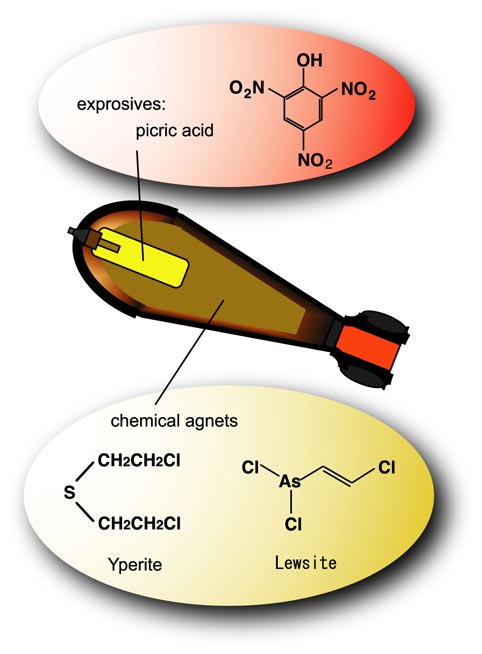
|
Hiroyuki Wariisih, Ph.D; Faculty of Agriculture, Department of Forest and Forest Products Sciences. According to the Chemical Weapons Convention of the Organization for the Prohibition of Chemical Weapons (effective on the 29th of April, 1997), all chemical weapons should be destroyed within ten years. More than 130 countries, including Japan, have ratified the Treaty. Among many types of chemical weapons, the agent which has been produced and stored the most was found to be bis(2-chloroethyl) sulfide, also known as Yperite or mustard gas. Yperite is markedly cytotoxic and is also a carcinogenic and mutagenic alkylating agent. Large-scale incineration of Yperite was started in 1990. During incineration and neutralization, however, several drawbacks were discovered (U.S. Congress, Office of Technology Assessment 1992, U.S. General Accounting Office 1994). As an alternative to incineration, several methods have been proposed. The bioremediation process is thought to be advantageous over other conventional processes because of a minimal impact on the environment and of cost effectiveness. Furthermore, bioremediation seems to be the only practical process to cleanup widespread soil contamination. Basidiomycetes are eukaryotic microorganisms that can metabolize a wide variety of environmentally persistent compounds, including trinitrotoluene, chlorophenols, and sulfur-containing heterocyclic compounds. Our previous reports indicated that basidio-mycetes are capable of effectively cleaving a C-S bond in 4-hydroxymethylthiophene and benzyl sulfide. Furthermore, fungi were reported to degrade bis(2-bromoethyl) sulfide, an Yperite analogue . In this study, we studied the biodegradation of Yperite by the basidiomycetes, Coriolus versicolor and Tyromyces palustris, which were utilized as the white-rot and brown-rot fungi, respectively. This research was supported by Kyushu University Interdisciplinary Program in Education and Projects in Research Development.  |